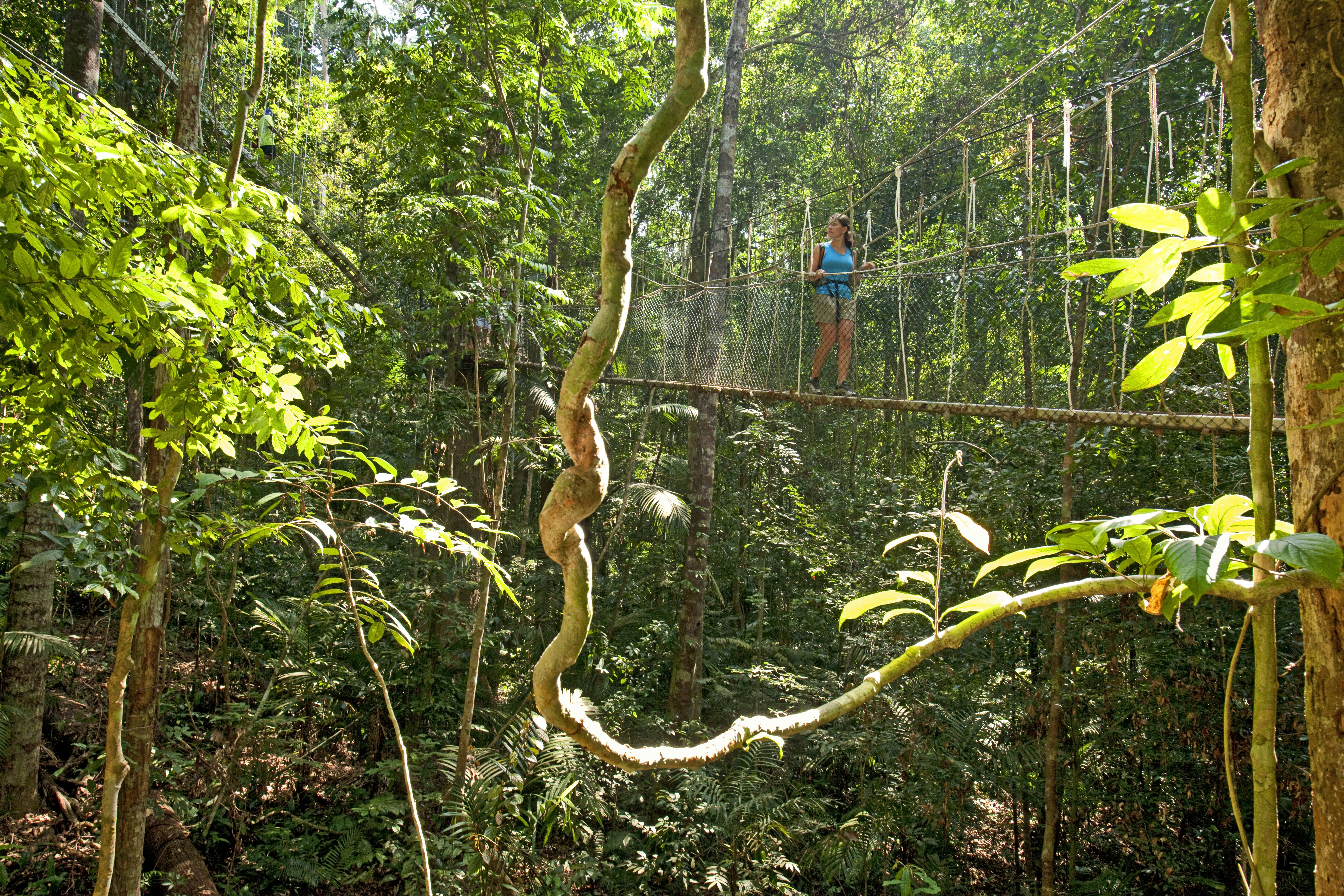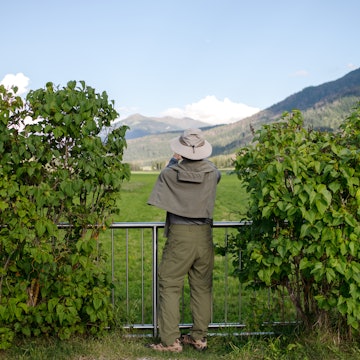
Malaysia’s best national parks: A mesmerising menagerie of mountains, rainforest, and millennia-old caves
Feb 13, 2022 • 4 min read

A silver leaf monkey in the jungle of Bako National Park © Sonia Loporto / Shutterstock
Scenic waterfalls. Rushing rivers. Millennia-old caves systems. Mighty mountains. Malaysia's national parks spoil visitors with their natural splendors. They're also packed with adventures for those who seek them.
Whether you want the challenge of a new hiking trail, to tackle a canopy walk, or to explore the jungle under the cover of darkness, these beautiful protected areas offer a completely distinct take on the country. Backpacks ready? These are the best national parks in Malaysia.

Taman Negara National Park, Pahang
The largest national park in Malaysia stretches over three states: Pahang, Kelantan, and Terengganu. It is ideal for family trips: taking the longboat along Tembeling River or to the Lata Berkoh waterfall will provide the enough adventure for kids to disconnect from their phones. These boat rides also lead you to a village belonging to the nomadic Batek tribe where you can learn to hunt using a bamboo blowpipe and make fire using reed skin and roots.
If you’re not afraid of heights, the Canopy Walk – one of the world’s longest canopy walkways – gives a tree-high view of the surrounding lowland rainforest. Take your flashlights to the night jungle walk or night boat cruise, and see if you can spot the Malay civet cat or flying lemurs in the dark before your guide can.
Visiting Taman Negara National Park
Entry into Taman Negara National Park is RM1 (US$0.25). The best time to visit is between February and September. You can drive from Kuala Lumpur to Kuala Tahan where Taman Negara is located in just over three hours. The cheapest option is to take the bus to Jerantut bus station and switch to a local bus operator Bus Latiff or Pahang Lin Siong to Kuala Tahan bus stand. Homestays are available, but Mutiara Taman Negara Resort is conveniently located within the national park.

Mt Kinabalu National Park, Sabah
Climbing Mt Kinabalu is not for the faint of heart, so strolling around Kinabalu National Park in a cool climate is a good option for leisure travelers. You may be easily mesmerized by the highest point between the Himalayas and New Guinea, but remember this Unesco World Heritage Site has plenty more to offer. Book on one of the daily guided walks to learn fun facts and opportunities to spot the carnivorous pitcher plants, blooming orchids, and the world’s largest flower, Rafflesia, along its nature trail.
If you do wish to climb Mt Kinabalu, there are two summit trails, Ranau Trail (moderately easy with flights of stairs) or Kota Belud Trail (challenging path with wooden steps and rope climbs). Sabah Parks only issue 150 climb permits per day, with some hikers booking six months ahead of their climb.
Visiting Mount Kinabalu National Park
Entrance fees for Malaysians are RM3 ($0.72) for adults and RM1 ($4.20) for children. For non-Malaysians, it’s RM15 ($3.60) for adults and RM10 ($2.40) for children. To get to Mt Kinabalu National Park, you can drive from Kota Kinabalu in two hours, or take the bus from Kota Kinabalu North Bus Terminal in Inanam.

Gunung Mulu National Park, Sarawak
As the gateway to Gunung Mulu, Sarawak’s second-highest mountain, adrenaline seekers come to Gunung Mulu National Park for its million-year-old cave systems, underground rivers, and limestone formations. Not only will you get a workout from a good hike, but also the chance to explore Deer and Lang Caves, one of the world’s largest cave passages.
If your stamina permits, there is an extreme three-day hike to the Mulu Pinnacles that promises a view of the stunning limestone formation once you’ve survived the vertical steel ladders and rope sections at the final leg.
Visiting Gunung Mulu National Park
Entrance fees for Malaysians are RM15 ($3.60) for adults and RM5 ($1.20) for children. For non-Malaysians, it’s RM30 ($7.20) for adults and RM10 ($2.40) for children. Park entrance fees are valid for five days. To get to Gunung Mulu National Park, take a short flight from Kota Kinabalu, Kuching or Miri to Mulu via MasWings.
Bako National Park, Sarawak
Bako National Park prides itself on bringing visitors closer to Sarawak’s lush rainforest. Unlike other national parks in Malaysia, you need to take a boat across the South China Sea to reach the park. Once you hop off, you can easily spot proboscis monkeys, long-tailed macaques, and Bornean bearded pigs roaming around. The best way to get up close to the mangrove forests and coastlines is by exploring any of its 16 nature trails.
For relaxing walks, the 30-minute Tanjung Sapi trail leads you to a view of Telok Assam and the South China Sea. If you have a full day, the Tanjung Rhu trail takes you to the tranquil Rhu peninsula complete with rock pools.
Visiting Bako National Park
Entrance fees for Malaysians are RM5 ($1.20) for adults and RM2 ($0.50) for children. For non-Malaysians, it’s RM10 ($2.40) for adults and RM5 ($1.20) for children. To get to Bako National Park, take the bus from Kuching (Rapid Kuching, No.1) to Bako Village boat jetty, and then, charter a boat to Bako National Park.
You might also like:
Exploring Melaka City's regenerated riverside
The steps to this Malaysian temple got a rainbow makeover – and created controversy
'Ghosts are a big part of life in Malaysia': healing one year after losing my parents to COVID












